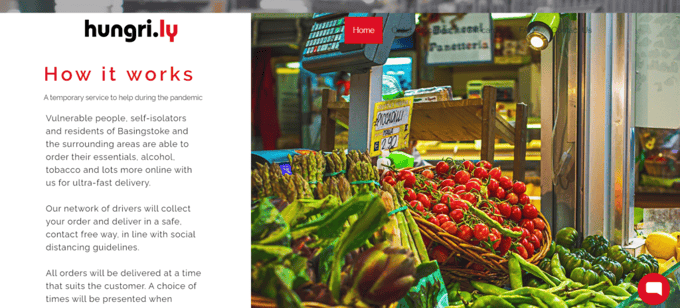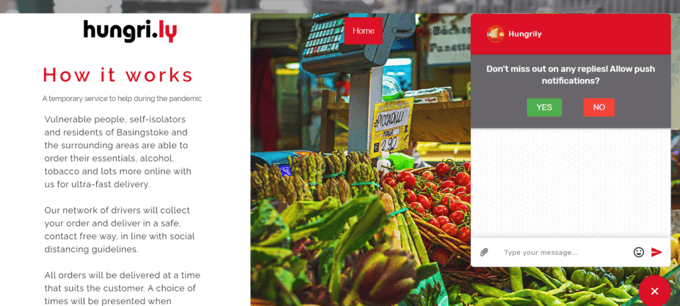How can I help you today? Driving online sales with a chatbot
Chatbots, or virtual assistants, have evolved a long way since the Microsoft paperclip, Clippit, used to pop-up in your document to check if you were writing a letter and wanted any help.
Where Clippit failed to win many admirers in its day, it can now be seen as a very important predecessor for what is fast becoming an essential tool in customer service for online shopping.
One recent survey suggested that 67 percent of consumers worldwide had used a chatbot for customer support in the last year, while Opus Research is predicting that $4.5 billion will be invested in virtual assistants by 2021.
It is safe to say that chatbots are here to stay, and for very good reason.
Chatbots are now an essential part of online customer service
What are your opening hours? Where can I find the vegan options? Is there a delivery slot available next Wednesday afternoon? Is my favourite type of chocolate in stock? What are this week’s special offers?
Online shoppers will have just as many questions as those that visit a physical store. If a customer instore were to be ignored by the staff, however, or made to search high and low for the answers to their simple questions, then they would probably leave pretty quickly and try the store next door instead. When online, the same rules apply.
Integrated into an eGrocery store via a simple API, chatbots provide a ‘text to text’ ability to interact with your online customers. They can be programmed with a bank of helpful and polite answers that will serve as a single information point for thousands of customers’ individual enquiries. They will respond instantly to frequently asked questions and then fast-track the customer to the answer without the need to waste time searching around the website.
Chatbots also have a major advantage over instore customer service too. A virtual assistant can inconspicuously follow a customer around the store throughout their shop without being intrusive. They will sit in a corner of the page ready to be activated whenever needed, or remain dormant when not, and this service can be available 24/7.
This mix of personalised assistance, on-demand access and time-saving support for customers all contributes to a more positive user experience. From the retailer’s perspective, it also plays a vital role in converting sales.
Chatbots can help to reduce cart abandonment
e-commerce is a very competitive space. Customers can easily change their mind and abandon a purchase before reaching the checkout if they encounter even the most simple obstacle. While eGrocery cart abandonment is typically 10-15 per cent lower than other types of online shopping (see another of our blogs highlighting some of the differences here), it can still be as much as 72 per cent.
As such, reducing cart abandonment rates is one of the most important challenges that an online retailer faces. Many of the barriers to sales conversion, however, are avoidable. Merchants can, for example, create unique coupon codes with short validity timeframe for customers who abandon their carts and distribute the coupons via a chatbot to encourage finalizing the order. This can be achieved by using a composable e-commerce platform like Emporix for collecting the data about cart abandonment and applying the discount to the order and a compatible API-first promotion engine like Voucherify to create, manage and distribute the coupons.
Removing barriers to conversion
Implementing headless commerce software will ensure that the different steps along a customer journey are as intuitive and user-friendly as possible - from product searches and selection to the checkout process and delivery arrangements. This is the first step to preventing a customer from dropping out.
Another part of this strategy must be to actively communicate and reassure shoppers of all of the online products and services that are available. If a customer drops out by mistakenly thinking that the retailer does not have what they need, this may well be because the information is too hidden. Access to a chatbot will help to avoid this, bringing the relevant information forward on demand.
Sometimes, there will be queries that are more complex and will benefit from human intervention. While the chatbot can take care of the simple and quick fixes, it can also act as a triage for more complicated customer service requirements. Provided that human resources are available, an alert system can be built into the chatbot conversation templates that will reroute a customer to a member of staff when needed. This can either be to a live chat when someone is available to answer with instant messages, or via a call-back request and promise to respond in a specified timeframe, bridging the virtual with the real world using omnichannel communications.

A partner of Emporix, Hungrily, has used a chatbot mechanism from Intercom on its new e-commerce site to great effect. The UK-based business quickly transformed its home-cooked meal service to an online grocery business at the beginning of the pandemic, helping vulnerable people and self-isolators in the local area to access essential foods and other grocery goods while in lockdown.
The rapid change of the business model meant that it was important to also provide a mechanism for customers to ask questions about the new service. A chatbot was added to the site, set up with initial programmed answers and an alert system that would notify a member of staff whenever a question was asked. This enabled Hungrily to reassure its customers that their requests had been received before providing specific responses from a human agent, taking the customer service that extra mile while customers faced such difficult circumstances. (More details about the partnership can be seen here)

Chatbot technology is advancing quickly
AI and machine learning is creating ever-more intuitive chatbots that are able to respond accurately to a wide variety of questions asked in different ways. This also serves to extend interactions by learning which additional information can be offered that the customer might not have thought to ask, but is still relevant and interesting to them.
Beyond customer service, a chatbot can help with cross-selling and upselling, highlighting special offers and discounts or suggesting alternative products at opportune times. They can be used to strategically direct website traffic to aid marketing and promotions. Further engagement strategies - such as offering helpful content around dietary alerts and the ingredients for individual products, for example - will provide opportunities to build further connections with customers to keep them engaged.
In time, the virtual assistant can be expected to become increasingly personalised, learning more about an individual’s shopping habits and preferences so that services and experiences can be offered bespoke.
Next time you have a query about your shop, you can guarantee that a virtual assistant will be there and ready to help!
If you have any questions or would like more information about headless commerce solutions, get in touch with us here.
